Kevin Queenan
Climate change and campylobacteriosis from chicken meat: the changing risk factors and their importance
Queenan, Kevin; Haesler, Barbara
Authors
Barbara Haesler
Abstract
Global consumption of chicken meat is currently the highest consumed meat per capita, and it continues to rise. Campylobacteriosis is one of the most reported gastrointestinal conditions, typically associated with chicken meat consumption. Cases are seasonal with summer and early autumn peaks. Similar seasonal peaks in Campylobacter prevalence in broilers and in retailed chicken meat have also been shown. Climate change impacts include increased ambient temperatures, rainfall, and humidity, and more frequent extreme weather events. These are likely to impact the risks associated with warmer-season foodborne diseases like campylobacteriosis. A literature review was conducted to identify the chicken related Campylobacter risk factors from farm to fork. Expert opinion was gathered using a modified Delphi survey in two rounds: 1) to identify risk factors whose likelihood of occurring would be impacted by climate change, 2) to determine likelihood of the proposed change and the impact on campylobacteriosis from chicken meat consumption. Likert scores were used to calculate a mean risk level value that was used together with a respondent agreement cut-off of over 66% to highlight risk factors most likely to change and to impact the risk of campylobacteriosis from chicken meat under climate change. Increasing temperatures and humidity and the extension of summer and early autumn seasons had the overall highest Mean Risk Level value (19/25). The increased prevalence of pests, especially flies had the second highest (16/25), and the highest respondent agreement level (94%). Several water-related risk factors were found likely to increase, including water drinker contamination, use of non-mains water sources, and those associated with water-based broiler house hygiene. Heat stress related risks were also highlighted, including the increased likelihood of on-farm Campylobacter positive animals and recent in-flock mortalities, a high degree of caecal colonisation, and faecal shedding of Campylobacter, and contaminating drinkers and carcase washing water. Other risk factors affected included higher consumption volumes and frequency of chicken meals, and broiler farmers having under 10 years of experience. These findings provide insights on how climate change may affect risk factor occurrence in the future and highlights those risks that decisionmakers should consider more closely in the future.
Citation
Queenan, K., & Haesler, B. (in press). Climate change and campylobacteriosis from chicken meat: the changing risk factors and their importance. Food Control, https://doi.org/10.1016/j.foodcont.2025.111193
| Journal Article Type | Article |
|---|---|
| Acceptance Date | Jan 30, 2025 |
| Online Publication Date | Feb 6, 2025 |
| Deposit Date | Jan 31, 2025 |
| Publicly Available Date | Feb 17, 2025 |
| Print ISSN | 0956-7135 |
| Publisher | Elsevier |
| Peer Reviewed | Peer Reviewed |
| DOI | https://doi.org/10.1016/j.foodcont.2025.111193 |
Files
Food Control Published Final
(8.5 Mb)
PDF
Licence
http://creativecommons.org/licenses/by/4.0/
Publisher Licence URL
http://creativecommons.org/licenses/by/4.0/
Version
VoR
You might also like
Downloadable Citations
About RVC Repository
Administrator e-mail: publicationsrepos@rvc.ac.uk
This application uses the following open-source libraries:
SheetJS Community Edition
Apache License Version 2.0 (http://www.apache.org/licenses/)
PDF.js
Apache License Version 2.0 (http://www.apache.org/licenses/)
Font Awesome
SIL OFL 1.1 (http://scripts.sil.org/OFL)
MIT License (http://opensource.org/licenses/mit-license.html)
CC BY 3.0 ( http://creativecommons.org/licenses/by/3.0/)
Powered by Worktribe © 2025
Advanced Search
